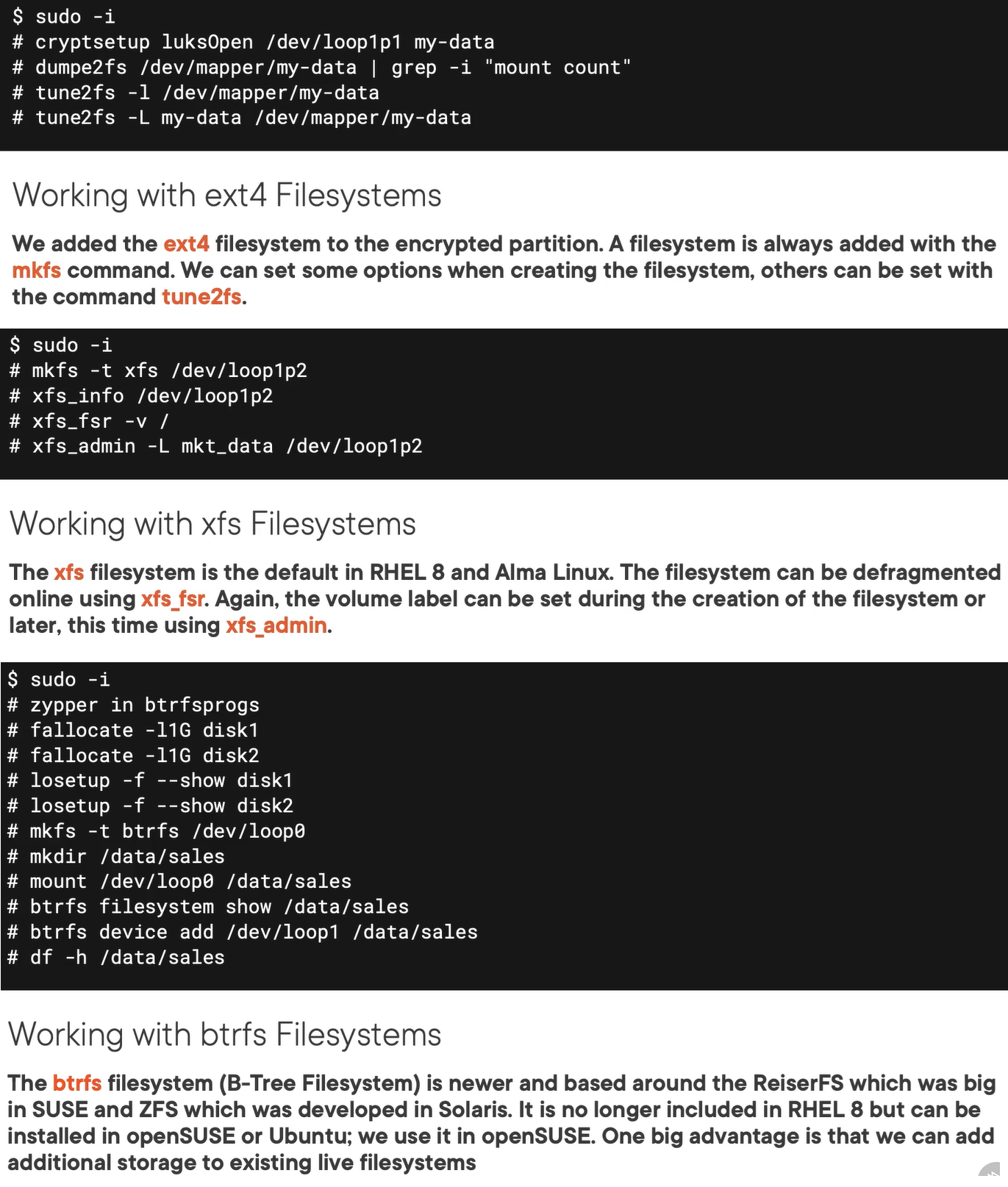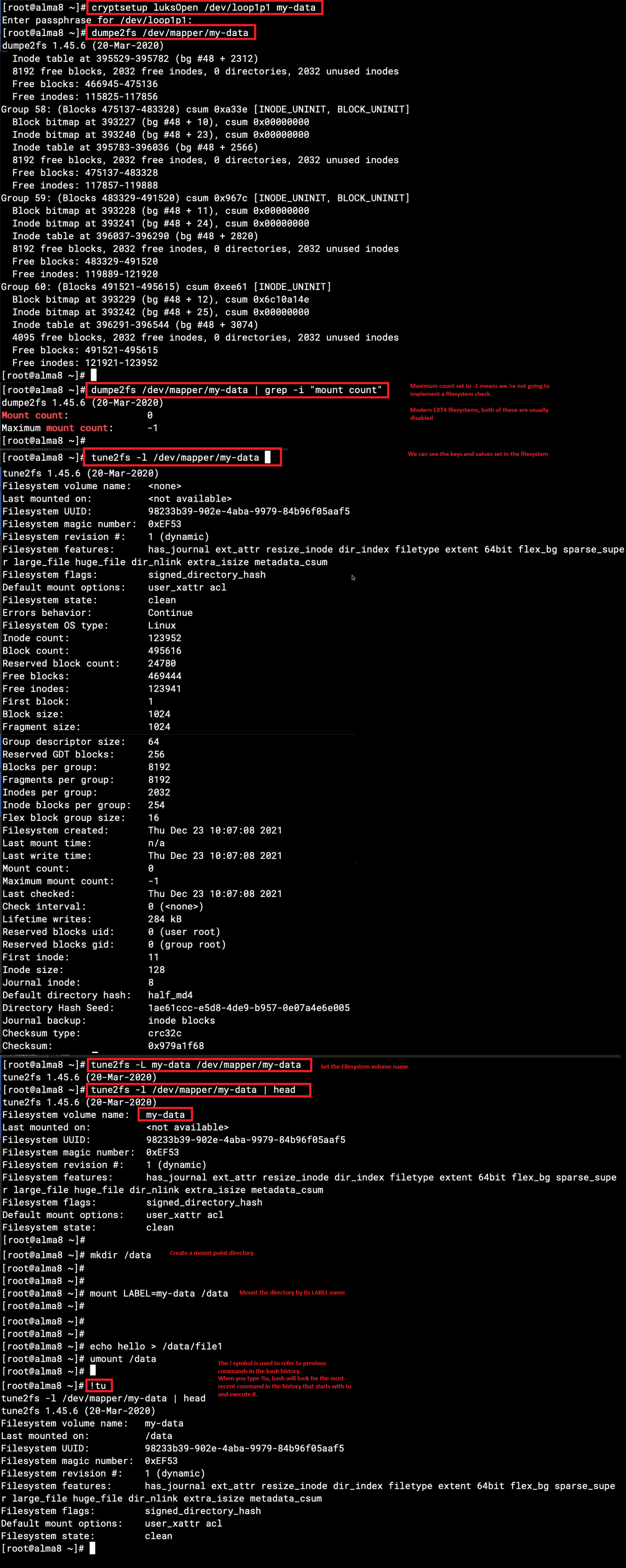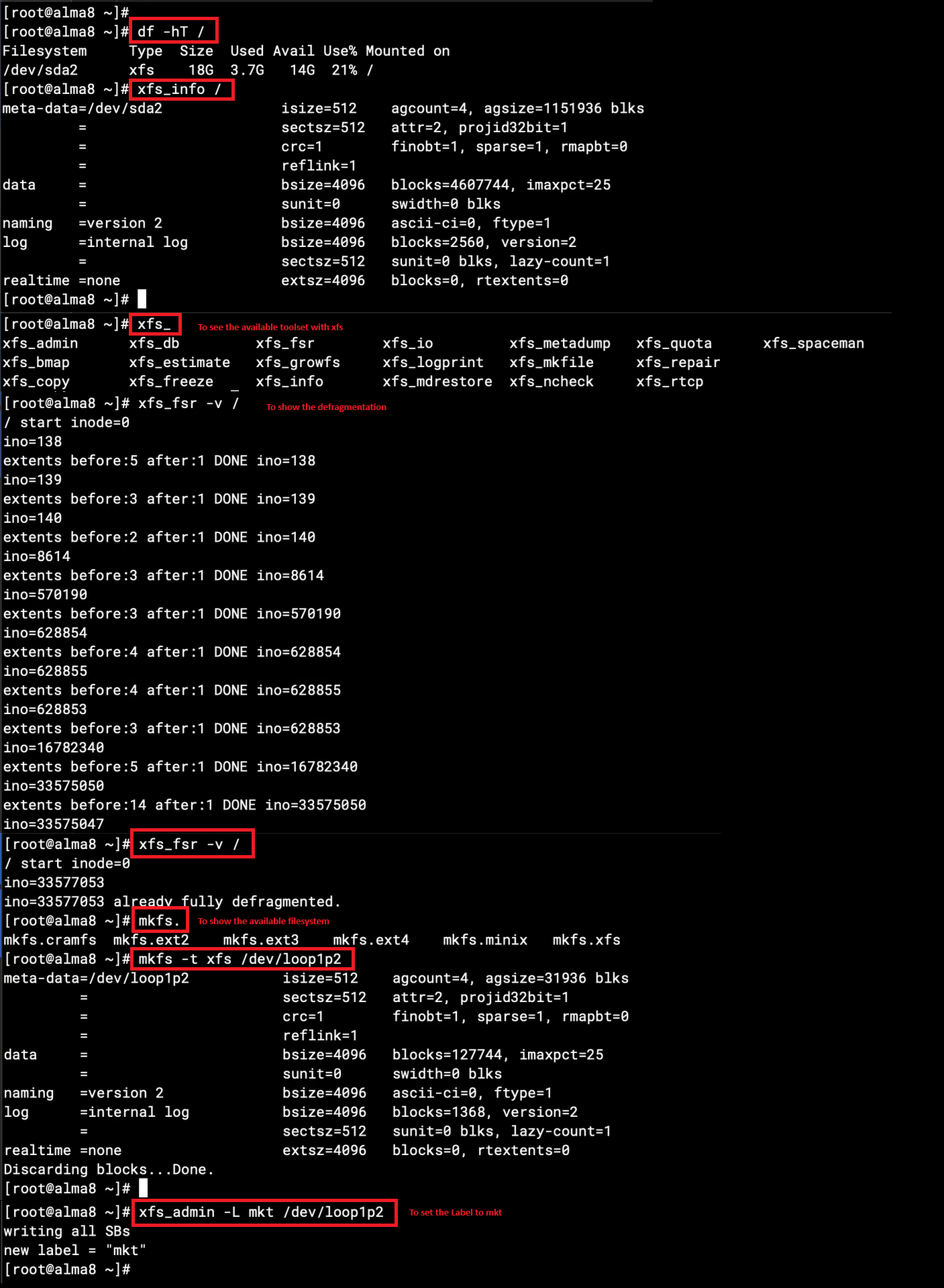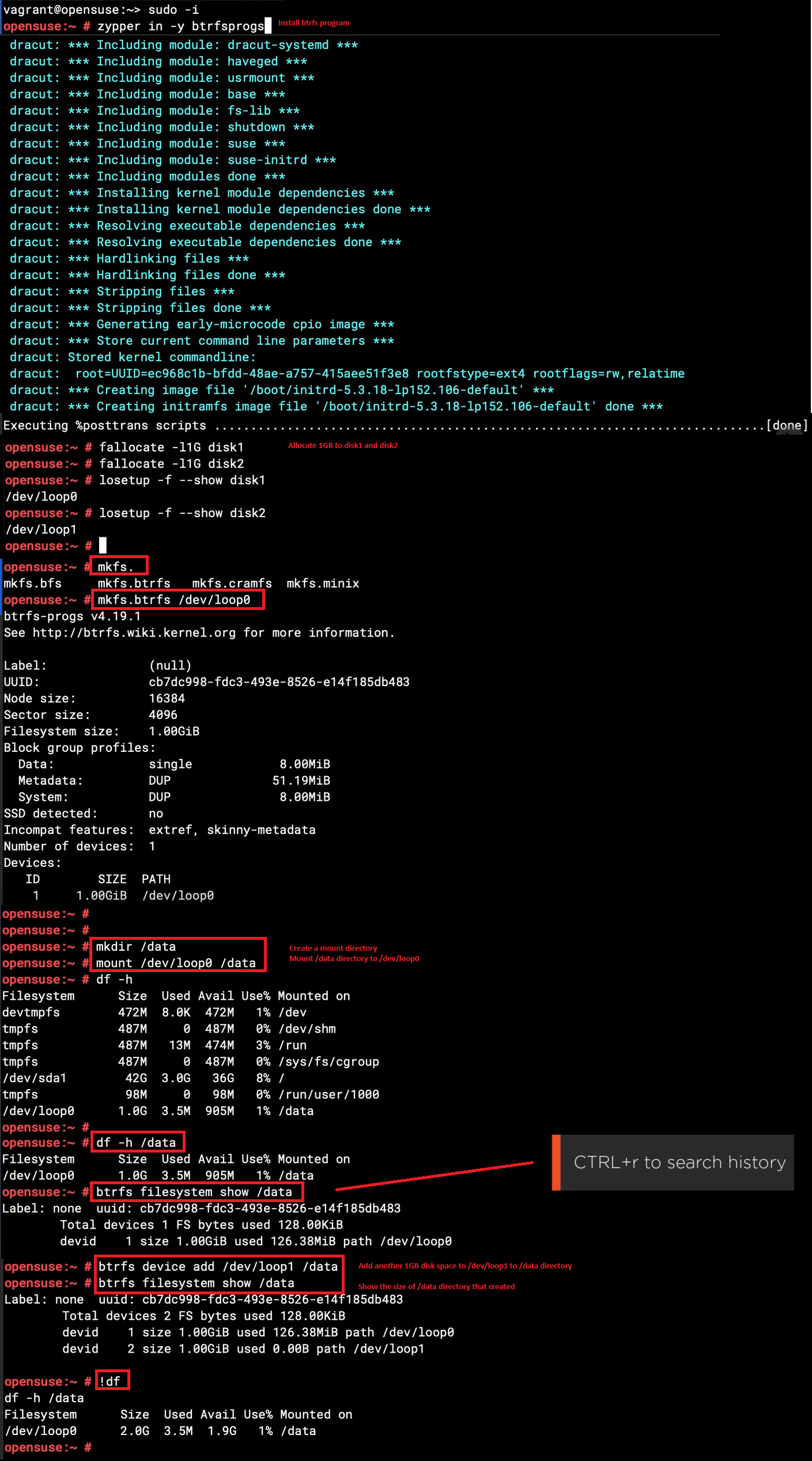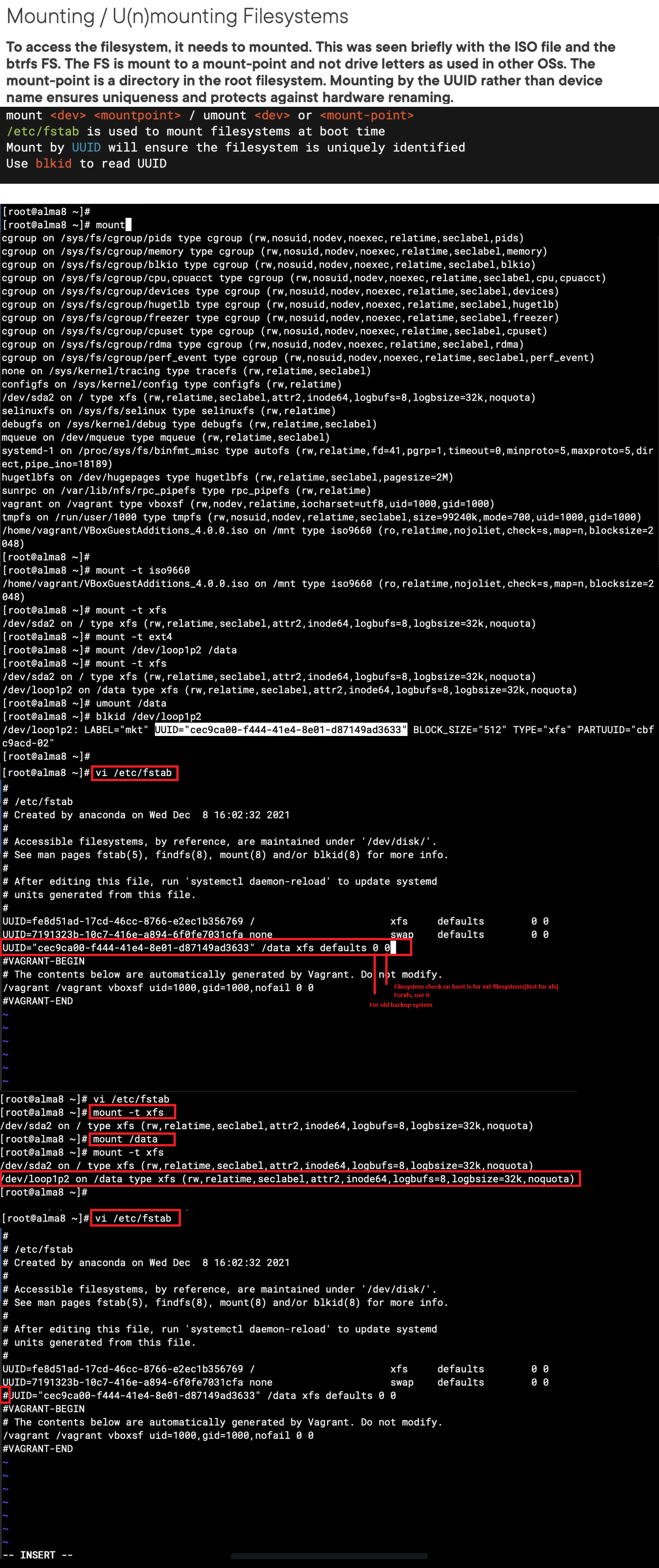Linux Plus-Managing Linux Filesystem
Overview
Filesystems
- Create and manage filesystems
- ext4
- xfs
- btrfs
- Mount filesystems
###
- Gain root privileges
- Using luksOpen to decrypt the device
- Searching “mount count”
- Format loop1p2 partition with xfs
- Defrag a filesystem while the system is online …
Managing EXT4 Filesystemms
- The filesystem already exists
- We can read the filesystem settings
- Configure the volume label
Managing XFS Filesystems
- Add a filesystem to the second partition
- Using the xfs toolset to read the filesystems settings
- Demonstrating the dynamic nature of XFS to defrag the existing root filesystem
Managing btrfs on openSUSE
- Install btrfs
- Add new disk files
- Add btrfs filesystem to one disk and mount it
- Checking the filesystem, and view its size
- Add another disk and check the filesystem grew while still online
Working with Mount and Unmount
- Using the mount command
- Using the umount command
- Checking the UUID using blkid
- Persisting mounts in the /etc/fstab
Summary
- Check the size of the file (df) or directory (du)
1
df, du
- mkfs - create a filesytem, such as xfs, ext4 and btrfs (option -t - to specify the type of filesystem)
1
mkfs -t xfs, ext4, btrfs
- To mount and unmount the disk
1
mount / umount
- To persist any of the filesystem into the mount point edit /etc/fstab and use the UUID of the filesystem
1
vi /etc/fstab
- Gain information of the filesystem
1
tune2fs, dumpe2fs
- To defragment the filesystem
1
xfs_admin, xfs_fsr, xfs_info
- For Advanced filesystems settings
1
btrfs #subcommand#
This post is licensed under CC BY 4.0 by the author.

